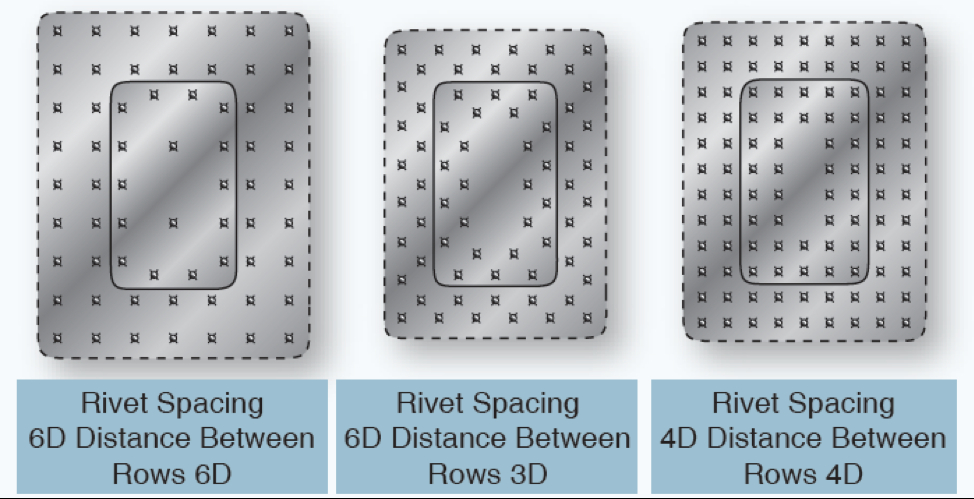Rivet Spacing

A common question from our students is, “How far apart should I space the rivets on a repair?” It’s a valid question since it’s often part of the FAA Oral and Practical exams. But as is often the case, there is not a simple one-shot answer and the FAA only specifies minimum spacing rather than maximum. One safe fallback is that OEM instructions always take precedence over FAA instructions. So, if you have OEM guidance then follow that. Also, if you work for a Part 121 Operator and your Engineering Department has provided instructions then those take precedence over FAA and OEM guidance. I should mention that there are also other approved instructions such as those included in a Supplemental Type Certificate (STC).
In a nutshell, spacing is measured between the centerlines of rivets in the same row. In the absence of OEM or company engineering guidance, the minimum spacing between protruding head rivets can’t be less than 3.5 times the rivet shank diameter. The minimum spacing between flush head rivets can’t be less than 4 times the diameter of the rivet shank.
The general practice is to use the same rivet spacing that the manufacturer used in the area surrounding the repair. Besides this, there are no specific rules that govern spacing of rivets, but minimum requirements must be observed.
- When possible, rivet spacing and distance between rows should be the same as that of the original installation.
- When new sections are to be added, the distance between rivets or pitch should be at least 3 times the diameter of the rivet shank; and the distance between rivet rows should never be less than 2.5 times the diameter of the rivet shank.
Remember, always use the diameter of the rivet shank and not the diameter of the head.
